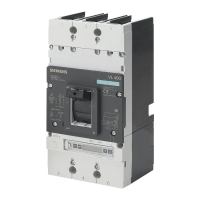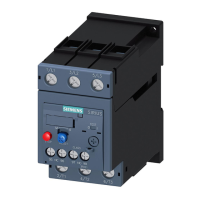Application planning
5.2 Use of capacitor banks
3VL IEC molded case circuit breakers
58 System Manual, 11/2013, 110 0110 - 02 DS 03
Capacitor banks are used, for example, for reactive power compensation. In reactive power
compensation, also called power factor correction, the undesired reactive power of loads in
AC systems is reduced. Reactive power compensation is usually performed by
compensating inductive reactive power with capacitive load.
A combination of fixed and central compensations are used depending on the design of the
low-voltage system and the loads involved.
Molded case circuit breaker for protecting and switching capacitor banks
According to the relevant standards DIN VDE 0560 Part 41 / EN 60831-1 / IEC 70,
capacitors must operate under normal operating conditions with the current's RMS value
being up to 1.3 times the rated current of the capacitor. In addition, a further tolerance of up
to 15% of the real value of the power must be taken into consideration.
The maximum current with which the selected molded case circuit breaker can be constantly
loaded, and which it must also be able to switch, is calculated as follows:
I
N max
= I
N
x 1.5 (RMS value, RMS current)
Important values for selecting the molded case circuit breaker
More detailed information in the technical data: Capacitor banks (Page 152)
n
Capacitor bank rated power in kVA
Rated voltage of the capacitor
N
Rated current of the capacitor bank
Maximum expected rated current
i
Value for setting the instantaneous short-circuit release
Value for setting the inverse-time delayed overload release
The following applies:
I
N
= Q
N
/ (√3 x U
N
)
I
R
= I
Nmax
= I
N
x 1.5
I
i
> 9 x I
R
(minimum)

